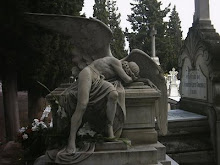
It is a strange fusion of alchemy, ancient wisdom and near pornographic heresy. In
other words, it has all the makings of a popular novel but in order to best understand
the work, an altered state of consciousness may be in order.
Rest assured that if this altered state is not self-induced you will soon feel the powerful
effects of its madness and the publishers are not responsible for the consequences.
There is nothing inordinately evil or hateful in the text itself nor do we believe that the
text is hateful or even necessarily evil.
There is a very strong allegory within the text however and we urge the reader to find
that place within their consciousness to understand or grasp its hidden meaning.
As stated however this text is presented for information and perhaps entertainment
purposes only.
There is no justification for any acts committed in the name of this text nor is there any
material within this text which would hasten or encourage any acts of violence, subversion
or hatefulness or any wrongdoing whatsoever.
You may be prompted to ask us of course, as the publishers, what is our opinion of
that place within their consciousness to understand or grasp its hidden meaning.
As stated however this text is presented for information and perhaps entertainment
purposes only.
There is no justification for any acts committed in the name of this text nor is there any
material within this text which would hasten or encourage any acts of violence, subversion
or hatefulness or any wrongdoing whatsoever.
You may be prompted to ask us of course, as the publishers, what is our opinion of
The Unsacred Texts Of The Koton ?
Our answer is sincere. The alchemical material within the text is fascinating as is much
of the bizarre poetry and strange allusions.
We don’t see any evil in this book nor do we see anything that most people would ordinarily
believe to be Satanic or subversive.
In this frequently bizarre and disturbing manuscript, we definitely see heresy and we
definitely see a lot of profane language but beyond that, the works of Satanic organizations
and their ilk are much more negative and it is perhaps with that in mind that lends
credence to the work itself.
Our answer is sincere. The alchemical material within the text is fascinating as is much
of the bizarre poetry and strange allusions.
We don’t see any evil in this book nor do we see anything that most people would ordinarily
believe to be Satanic or subversive.
In this frequently bizarre and disturbing manuscript, we definitely see heresy and we
definitely see a lot of profane language but beyond that, the works of Satanic organizations
and their ilk are much more negative and it is perhaps with that in mind that lends
credence to the work itself.
The Unsacred Texts Of The Koton is rude, lewd and crude and is perhaps
the very voice of the Devil himself but don’t let that stop you from
reading it alone in a darkened room as the moon rises high in the virgin
night sky.
It’s amazingly harmless and even ends with an optimistic and powerful message. But
perhaps that’s what makes The Unsacred Texts Of The Koton most notorious and
most insidious because in case you haven’t heard, the Devil always lies and it is
through lies that we are all so easily seduced.
There are certain ancient books and scrolls that are described as apocryphal. They are
hidden texts or unknown or unrecognized works of wisdom and history.
Certainly just as the Necronomicon is of controvertible origins, so must be considered
the very voice of the Devil himself but don’t let that stop you from
reading it alone in a darkened room as the moon rises high in the virgin
night sky.
It’s amazingly harmless and even ends with an optimistic and powerful message. But
perhaps that’s what makes The Unsacred Texts Of The Koton most notorious and
most insidious because in case you haven’t heard, the Devil always lies and it is
through lies that we are all so easily seduced.
There are certain ancient books and scrolls that are described as apocryphal. They are
hidden texts or unknown or unrecognized works of wisdom and history.
Certainly just as the Necronomicon is of controvertible origins, so must be considered
The Unsacred Texts Of The Koton to be of debatable derivation and purpose but that
can be said of almost any philosophical work and of any work of legend. None of which
makes it no less shocking.
But as to their precise lineage of that only you can be the judge. And whether The Unsacred
Texts Of The Koton are indeed the rantings, the ravings and the very words of
Satan himself…
That remains to be seen and we will ask you to be the final judge. Understanding of
course that one should not be quick to judge, lest you be judged yourself.
can be said of almost any philosophical work and of any work of legend. None of which
makes it no less shocking.
But as to their precise lineage of that only you can be the judge. And whether The Unsacred
Texts Of The Koton are indeed the rantings, the ravings and the very words of
Satan himself…
That remains to be seen and we will ask you to be the final judge. Understanding of
course that one should not be quick to judge, lest you be judged yourself.















